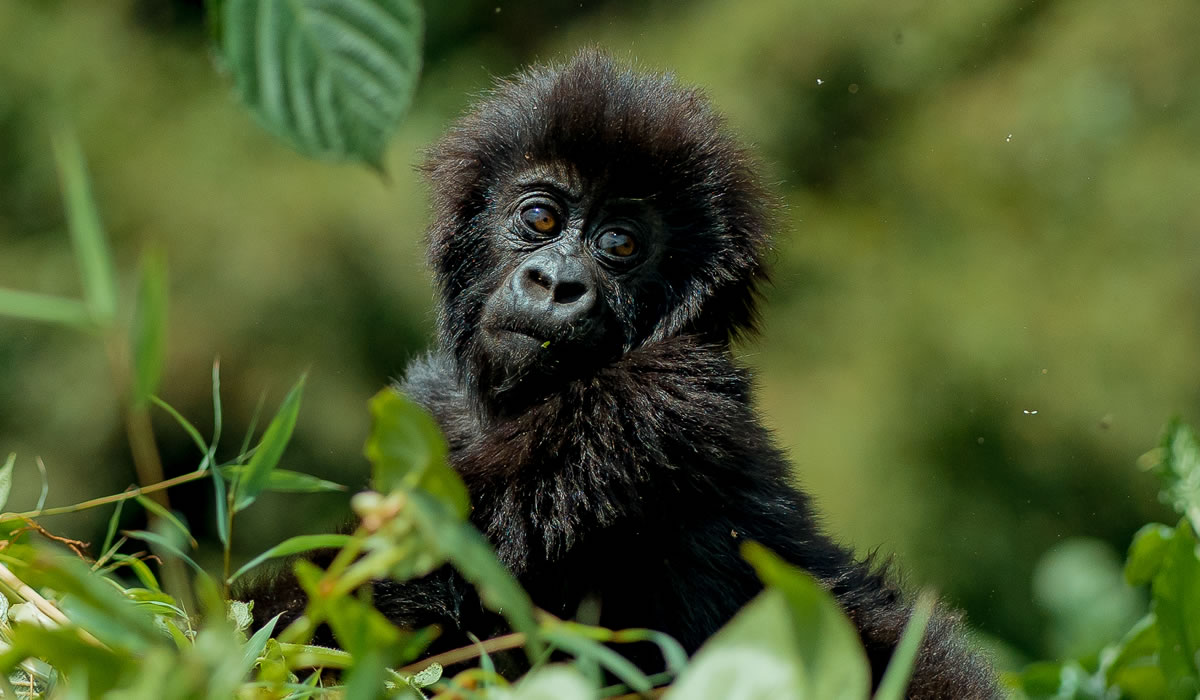Volcanoes National Park is one of the most iconic travel destinations in Rwanda and one of the most famous national parks in Africa. Nestled in the northwestern part of the country, the park covers about 160 square kilometers of lush rainforest, bamboo forest, and volcanic landscapes. It forms part of the Virunga Conservation Area, which extends into Uganda and the Democratic Republic of Congo. Volcanoes National Park is celebrated worldwide as the home of the endangered mountain gorillas, making it a prime destination for gorilla trekking safaris. Beyond its wildlife, the park also offers stunning scenery, rich cultural heritage, and a deep conservation history that makes it a unique place to visit.

The park was first established in 1925, making it one of the oldest national parks in Africa. Its creation was initially aimed at protecting the critically endangered mountain gorillas from poaching and habitat destruction. Over the decades, Volcanoes National Park has grown into a model of conservation success, attracting international attention and support. The work of the famous primatologist Dian Fossey, who dedicated her life to the study and protection of gorillas, is strongly linked with the park. Her research center, Karisoke, which she founded in the 1960s, continues to play a major role in gorilla conservation today. Visitors can even hike to her former research site and gravesite as part of a cultural and conservation experience.
Volcanoes National Park is primarily known for gorilla trekking, which is one of the most sought-after wildlife experiences in the world. Each day, a limited number of visitors are allowed to trek into the forest with trained guides and rangers to find habituated groups of mountain gorillas. This strict regulation ensures the protection of the gorillas while allowing tourists an intimate opportunity to observe them in their natural habitat. Spending an hour with these gentle giants is often described as a life-changing experience. Watching them feed, groom each other, and care for their young gives visitors an extraordinary appreciation for how closely related they are to humans. With fewer than 1,100 mountain gorillas remaining worldwide, a trek in Volcanoes National Park is not only a privilege but also a direct contribution to conservation efforts, since permit fees go toward protecting the gorillas and supporting local communities.
Besides gorillas, Volcanoes National Park is home to a variety of other wildlife. The park shelters golden monkeys, another endangered primate species that can be tracked on guided excursions. Golden monkeys are known for their playful nature and striking golden-orange fur, making them a delight to watch as they leap through the bamboo forests. Other mammals found in the park include forest elephants, buffaloes, duikers, bush pigs, and a wide range of small carnivores, although these are rarely seen due to the dense vegetation. For bird enthusiasts, the park is a paradise with over 200 bird species, including 16 Albertine Rift endemics such as the Ruwenzori batis, Archer’s robin-chat, and the Ruwenzori turaco.
The landscapes of Volcanoes National Park are as breathtaking as its wildlife. The park is characterized by its chain of five towering volcanoes, which are part of the Virunga Mountain range. These include Karisimbi, Bisoke, Muhabura, Gahinga, and Sabyinyo. Each volcano offers hiking opportunities of varying difficulty and reward. The hike to Mount Karisimbi, the tallest volcano at 4,507 meters, is a challenging two-day trek that attracts seasoned hikers. Mount Bisoke is popular for its crater lake, a stunning natural feature located near the summit that makes for a rewarding day hike. Mount Muhabura, Gahinga, and Sabyinyo also provide adventurous climbs and offer panoramic views of Rwanda, Uganda, and the Democratic Republic of Congo. Hiking in Volcanoes National Park is a chance not only to experience its volcanic landscapes but also to encounter rare plants, birds, and even primates along the way.
Cultural experiences are also a highlight of visiting Volcanoes National Park. Rwanda has a rich cultural heritage, and local communities living near the park are deeply connected to its history and conservation. Tourists can engage in cultural tours that showcase traditional dance, music, and storytelling. Visits to local villages allow travelers to learn about traditional farming practices, crafts, and cuisine. These interactions provide an authentic experience and help travelers understand the strong relationship between conservation and community development. Many community-based tourism initiatives are designed to ensure that local people benefit directly from tourism revenue, thereby strengthening their support for gorilla conservation.
The park also holds historical and conservation significance due to the work of Dian Fossey. A trek to the Dian Fossey Tomb and Karisoke Research Center site is a popular activity for those who wish to learn more about her life and legacy. Fossey’s pioneering work brought international awareness to the plight of the mountain gorillas and set the foundation for their continued survival. The hike to her gravesite also offers scenic views and chances to see wildlife, adding both educational and natural value to the experience.
Volcanoes National Park is easily accessible from Kigali, Rwanda’s capital. The drive takes about two and a half hours along well-paved roads that pass through rolling hills, tea plantations, and charming rural villages. This convenient location makes it possible for travelers to plan short trips, although most prefer to spend several days exploring the park and its surroundings. The nearby town of Musanze (formerly Ruhengeri) serves as the main gateway to the park and offers a variety of accommodation options. From luxury lodges such as Bisate Lodge and One&Only Gorilla’s Nest to mid-range hotels and budget guesthouses, travelers can choose accommodation that suits their preferences and budget.
Tourism activities in the park are highly regulated to ensure sustainability and the protection of wildlife. Gorilla trekking permits are limited and must be booked in advance, which helps control the number of visitors and minimizes disturbance to the animals. Each trekking group is accompanied by experienced guides and armed rangers to ensure both safety and respect for the gorillas. Similar regulations apply to golden monkey tracking and other activities. These conservation-focused practices make Volcanoes National Park one of the best examples of responsible tourism in Africa.
For travelers planning a visit, the best time to explore Volcanoes National Park is during the dry seasons, which occur from June to September and December to February. During these months, trekking conditions are more favorable, as the trails are less muddy and more manageable. However, because it is a rainforest region, visitors should always expect occasional rain. The wet seasons from March to May and October to November bring lush vegetation and fewer tourists, which can also be appealing for those seeking quieter experiences.
Volcanoes National Park is not just about gorilla trekking; it offers a holistic safari experience. Travelers can combine their visit with other attractions in Rwanda, such as Nyungwe Forest National Park, famous for chimpanzee trekking and canopy walks, and Akagera National Park, known for its classic savanna safaris with lions, elephants, giraffes, and hippos. Together, these parks create a diverse tourism circuit that showcases Rwanda’s extraordinary natural and cultural diversity. Kigali itself also offers enriching experiences with museums, art centers, and the Kigali Genocide Memorial, which provides important historical context for the nation.
Conservation and community empowerment lie at the heart of Volcanoes National Park’s success. The government of Rwanda, through the Rwanda Development Board, works closely with international conservation organizations and local communities to safeguard the park. A portion of the revenue from gorilla trekking permits is shared with communities around the park, funding schools, healthcare, and infrastructure projects. This revenue-sharing model has been instrumental in reducing poaching and promoting community involvement in conservation.
In recent years, the Kwita Izina Gorilla Naming Ceremony has become one of the most celebrated conservation events linked to the park. Inspired by a traditional Rwandan baby-naming ceremony, Kwita Izina involves naming newborn gorilla infants each year. The event attracts global attention and underscores Rwanda’s commitment to protecting its wildlife. It is a powerful symbol of the bond between conservation, culture, and national pride.
Volcanoes National Park is more than a travel destination; it is a living example of how dedicated conservation efforts can transform both wildlife populations and communities. The park has become a beacon of eco-tourism, drawing travelers who want to experience one of the rarest wildlife encounters on earth while also contributing to sustainable development. The sight of mountain gorillas thriving in the misty forests of the Virunga Mountains is a testament to decades of hard work and collaboration between Rwanda, conservationists, and local people.
In conclusion, Volcanoes National Park stands as one of Africa’s greatest treasures. Its breathtaking scenery, iconic mountain gorillas, golden monkeys, volcanic landscapes, and rich cultural connections make it a destination like no other. Whether you are seeking an unforgettable gorilla trekking adventure, a challenging volcanic hike, or an immersion in Rwanda’s cultural heritage, the park delivers an experience that is deeply rewarding. For travelers in search of a unique safari that combines wildlife, nature, and meaningful conservation, Volcanoes National Park is a place that should not be missed.
